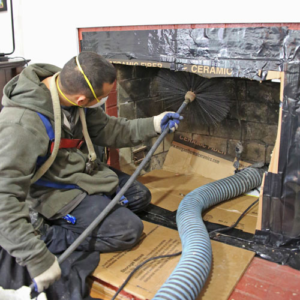Ozempic San Diego is a once-weekly injectable medication that helps manage blood sugar levels in people with type 2 diabetes. It also lowers the risk of heart and blood vessel problems in these patients.
Side effects of Ozempic include nausea and vomiting. Nausea may improve with continued use of the medication.

You should tell your doctor if you have had pancreatitis in the past or have other health problems, including kidney problems, liver problems, or gastrointestinal issues like reflux.
What is the Olympics?
Ozempic is a medication used to help people with type 2 diabetes lose weight and maintain a healthy body mass index (BMI). It works by helping the liver produce less glucose and slowing the movement of food through the digestive system. Ozempic has also been shown to lower blood sugar and HbA1c levels, which can reduce the risk of heart disease.
Ozempic comes as an injection to be administered under the skin (subcutaneously) once a week. It’s important that you follow the instructions provided to you by your healthcare team and read the Patient Information Leaflet carefully before starting treatment. Your doctor will determine your exact dose based on your unique health conditions and other medications you’re taking.
Your doctor may want to start you on a low dosage and then gradually increase your dosage over 4 to 5 weeks to get to the right level. You should always inform your doctor about any other medications, including over-the-counter medicines, vitamins, herbal supplements, and others that can affect blood sugar levels.
You should also tell your doctor if you have any pre-existing health conditions. You might be more at risk for serious side effects with this medicine if you have pancreatitis or problems with your gallbladder. It’s also important to discuss if you have any history of diabetic retinopathy. This condition can worsen with this medication.
It’s important to drink lots of fluids while taking Ozempic because diarrhea, nausea and vomiting can lead to dehydration. You might also need to change your diet to include more fruits and vegetables to prevent constipation and other GI issues.
This medication is available by prescription only and is a member of the class of drugs known as GLP-1 agonists. If you’re interested in trying it, you might be able to get a prescription through a telehealth service that offers a free obesity assessment. These services can give you an electronic prescription for Ozempic and provide other coaching and support to help you make lifestyle changes.
How does Olympic work?
Ozempic helps to decrease blood sugar levels by mimicking a naturally-occurring hormone in the body called glucagon. It also slows how quickly food moves out of your stomach, which helps increase feelings of satiety (fullness and satisfaction) after eating. This can help you lose weight.
The drug has a number of other effects, including blocking a chemical in your body that causes the liver to make glucose, and decreasing the amount of glucagon produced by the pancreas. It can also lower the amount of glucose made by the kidneys and can reduce fluid retention in some people.
It’s important to understand how this medication works so you can discuss it with your doctor before starting treatment. The drug can cause serious side effects that can be life-threatening. It may also interact with certain medications you take. You should not use this medication if you are allergic to liraglutide or have had an episode of pancreatitis in the past.
Some people have experienced gallbladder problems when taking this medication. This usually happens within the first few months of using the drug. This includes pain in the upper stomach area, yellowing of the skin or eyes (jaundice), and clay-colored stools. It’s important to talk to your doctor about this before starting Ozempic.
If you have pre-existing kidney problems, it’s important to discuss these with your doctor before starting this medication. This is because this medication can increase your risk of developing kidney problems. It may also worsen the condition of diabetes-related eye problems if you have any.
It isn’t known if this medication is safe to use during pregnancy or breastfeeding. If you become pregnant while taking the drug, stop it and let your doctor know right away. You should not breastfeed while taking this medication.
You should not share your Ozempic pen with anyone else, even if they have the same condition as you. You should also wash your hands before and after you inject the medication and never share needles or pens. Each package of Ozempic contains several pens with multiple needles. You will need to use a different needle for each injection.
Dosage and administration
Ozempic (semaglutide) is injected under the skin each week. It may be taken with or without food. It is important to stick with the same schedule each week so that you get the best results. It is also important to follow your doctor’s instructions for exercise and diet.
Ozempic is used in combination with diet and exercise to improve blood sugar control in adults with type 2 diabetes. It can also help reduce the risk of heart problems and stroke in these patients. It is not used to treat type 1 diabetes.
The most common side effects of ozempic include nausea, vomiting, and diarrhea. These symptoms are typically mild to moderate and go away with time. They are most noticeable at the beginning of treatment or when the dose is increased.
You should tell your doctor if you have any new or worsening symptoms while taking this medication. These can include eye problems, such as blurred vision, drowsiness, or dry mouth. You should also let your doctor know if you have any problems breathing or have a heart attack or stroke.
It is important to tell your doctor about all of the medicines you take, including prescription and non-prescription medicines, vitamins, and herbal products. Using this medicine with other medications can increase your risk of low blood sugar (hypoglycemia). Your doctor may need to change the doses of your other medications or add a different medicine to lower your risk of hypoglycemia.
A rare side effect of ozempic is pancreatitis, which can cause inflammation of the pancreas. If you experience symptoms of pancreatitis, such as vomiting or a pain in the upper belly that goes to the back, stop taking the medicine and contact your doctor right away.
Keep your Olympic pens in a cool, dark place and out of the reach of children. Do not freeze them or store them near the refrigerator cooling element. Each pen holds several doses of the drug. Throw away the pen after 56 days, even if there is still some solution left inside it. This is to protect yourself from infection and prevent others from using your medication.
Side effects
The most common side effects of ozempic are gastrointestinal issues, like nausea, acid reflux and constipation. These symptoms tend to go away as your body gets used to the medication. If they persist, talk to your doctor about them. They may be able to change your dose or recommend a different medication.
During clinical trials, about 1% of people developed antibodies to Ozempic, which can decrease the drug’s effectiveness over time. However, this is very rare and unlikely to occur in the general population of people taking it for long-term use.
Severe allergic reactions are rare but serious. If you experience hives, difficulty breathing, or swelling of your face or mouth, call your doctor right away.
Kidney problems are rare but can be serious if not treated. You may have more frequent or severe kidney problems if you take this medication with other diabetes drugs, especially GLP-1 receptor agonists. These include dulaglutide (Eli Lilly and Company), exenatide (Byetta, Novo Nordisk) and liraglutide (Tresiba, Eli Lilly and Company). You should also avoid drinking alcohol while taking these medications.
Adding probiotics to your diet could shift the balance of bacteria in your gut for the better and help with digestion. Yogurt, kefir and sauerkraut are good sources of probiotics. You can also find them in over-the-counter digestive aids like bismuth subsalicylate (Pepto Bismol) and simethicone (Gas-X).
A small number of people who take Ozempic develop pancreatitis, an inflammation of the pancreas. It can be life-threatening if not treated quickly. If you have signs of pancreatitis, like vomiting or abdominal pain in the upper part of your belly that travels to your back, stop taking Ozempic and call your doctor right away.
Some patients who stop taking ozempic say they feel hungry more often and have more blood sugar spikes after stopping the medication. Others say they have a lot of nausea or acid reflux. Some have trouble losing weight and regain some of the weight they lost while on the medication. Nausea is the most common reason people stop taking ozempic, followed by reflux and not losing enough weight.







